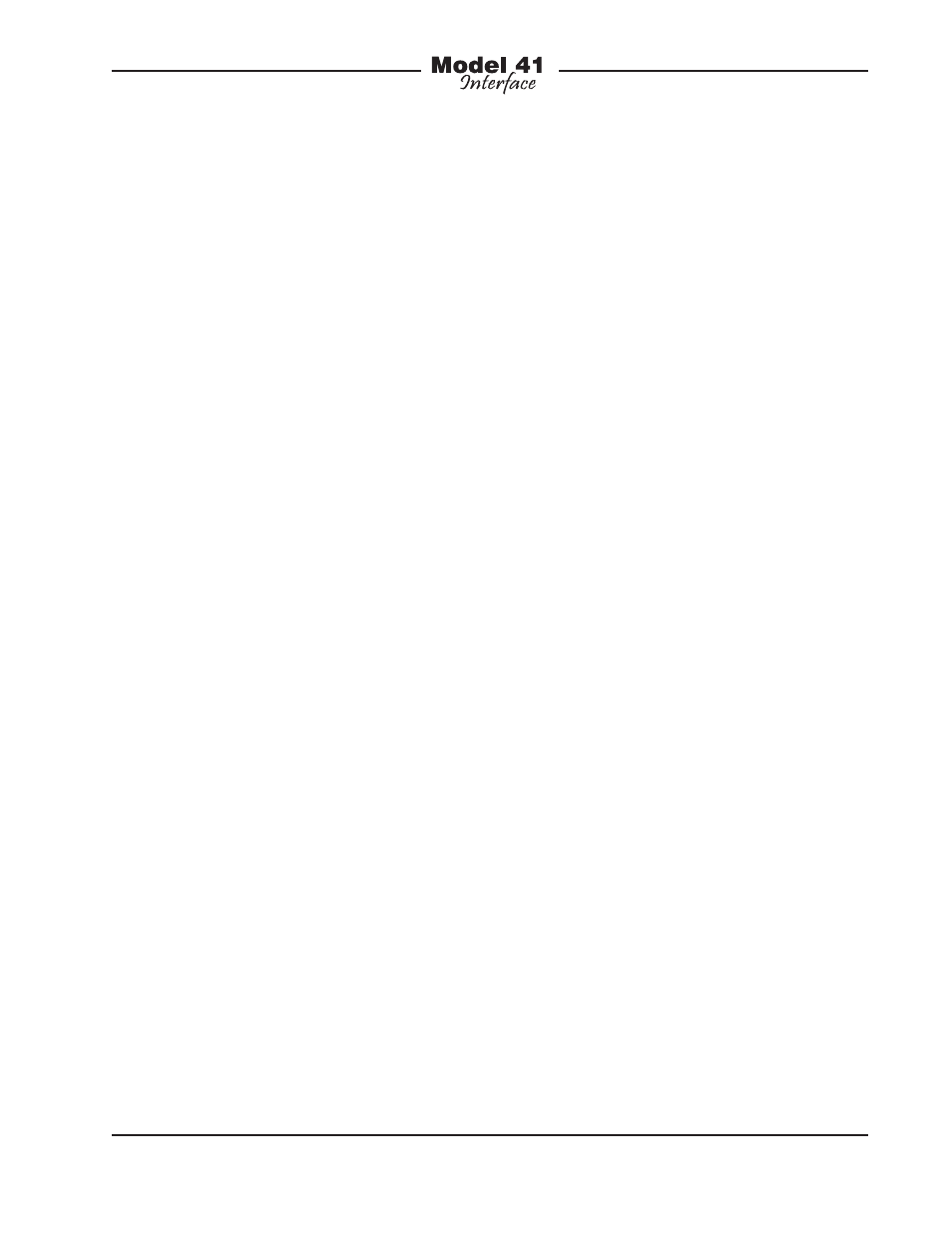Cable length, Cabling issues – crosstalk – Studio Technologies 41 2007 User Manual
Page 19

Model 41 User Guide
Issue 2, February 2007
Studio Technologies, Inc.
Page 19
Cable Length
There are no hard and fast rules defining
the maximum cable length possible when
connecting user devices to Model 41 IFB
circuits. The maximum cable length is
directly related to the amount of resistance
in the connecting cable; the lower the
resistance per foot (or meter), the longer
the cable can be. (Although cable capaci-
tance affects high-frequency performance,
resistance is the limiting factor in this case.)
For example, a traditional 20 AWG micro-
phone-type cable is Belden 8412, which
has 10.9 ohms resistance per conductor
per 1000 feet. Since we’re using two con-
ductors to carry the signal (pins 1 and 2)
you’d get 21.8 ohms per 1000 feet of cable.
By knowing the cable resistance value,
along with the minimum voltage and maxi-
mum load current required by an IFB user
device, a simple “ohms law” calculation will
tell you the maximum cable length.
Let’s use the example of a Studio Tech-
nologies Model 200 Announcer’s Console
being connected to a Model 41 IFB circuit.
We’ll select Belden 8412 as the intercon-
necting cable. For correct operation, the
Model 200 needs at least 24 volts DC
between pins 1 and 2 of its IFB input con-
nector. It has a current draw of 95 milliam-
peres. The Model 41’s IFB circuit presents
an output voltage of 30 volts across pins
1 and 2 and can supply a maximum current
of 200 milliamperes. (As the Model 200’s
current draw is well within the Model 41’s
capability, this is not a limiting factor.) The
difference between the voltage supplied
by the Model 41 (30 volts) and the voltage
required by the Model 200 (24 volts) allows
a 6 volt maximum drop over the intercon-
necting cable. Using the current draw
and maximum voltage drop figures, the
maximum cable resistance can easily be
calculated: 6 volts divided by 0.095 am-
peres equals 63 ohms. And finally, with
8412’s 21.8 ohms (total) per 1000 feet of
cable, a maximum of 2890 feet of cable
can be used and still be less than or
equal to 63 ohms. Using this example as
a guide, entering the appropriate values
will allow you to determine the maximum
cable length for your application.
Cabling Issues – Crosstalk
The Model 41’s IFB circuits conform to a
broadcast industry standard for sending
DC power and two channels of audio over
a single pair with shield audio cable. This
implementation allows standard portable
cables, such as are used for microphone
signals, to interconnect various IFB user
devices. This method is undoubtedly con-
venient and practical, but is not without
limitations. The main audio quality issue
is the possibility of crosstalk between the
two audio channels. This issue arises due
to the capacitance presented by the two
wires that form the twisted pair. The greater
the capacitance presented and the longer
the cable run, the greater the crosstalk will
become. Is this normally a problem dur-
ing actual use? No. But it’s something that
should be noted.
Studio Technologies did some experiment-
ing with various cables and the crosstalk
that was created. For example, a 1000-foot
reel of 24-gauge 2-pair unshielded tele-
phone cable was used to link a Model 41
IFB circuit with an IFB user device. One pair
carried the pin 2 (DC with channel 1 audio)
and pin 3 (channel 2 audio) connections.
One wire from the second pair carried the
pin 1 (DC and audio common) connection.
The inter-channel crosstalk in the voice au-
dio band was on the order of –45 dB. Is this
a good value for “professional” audio? Of
